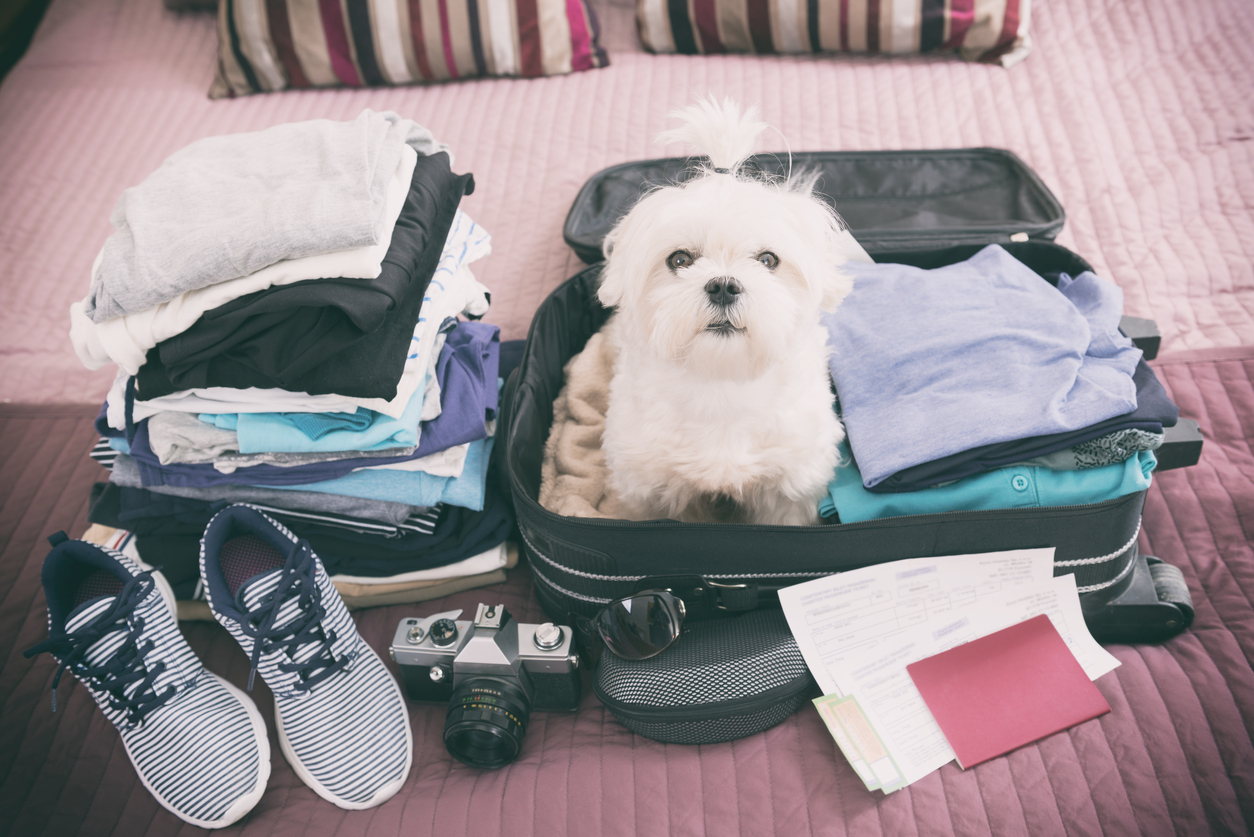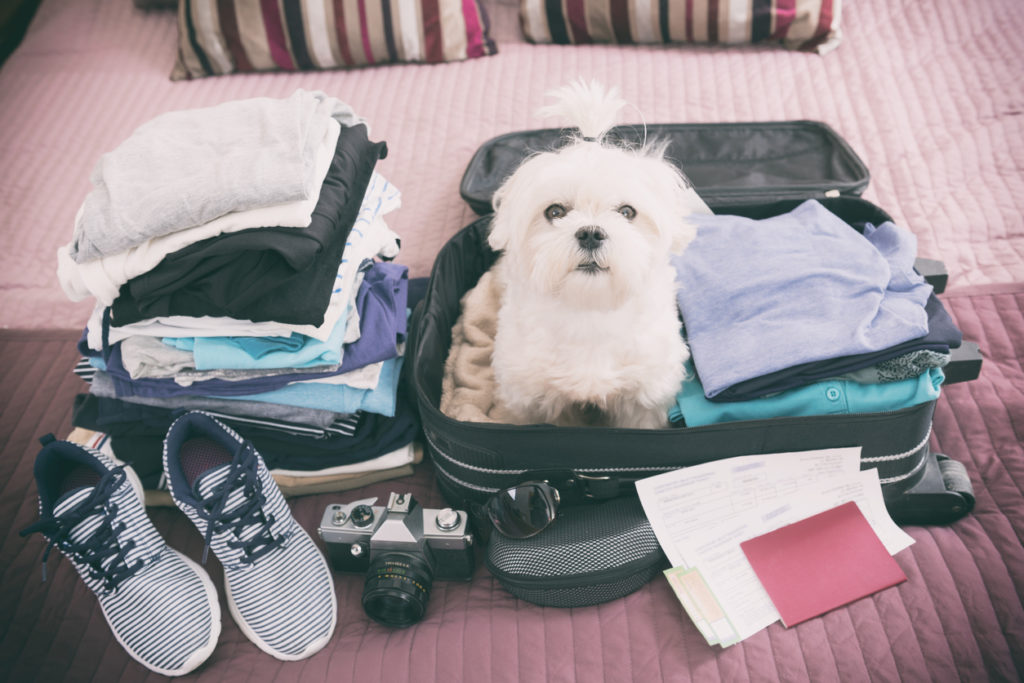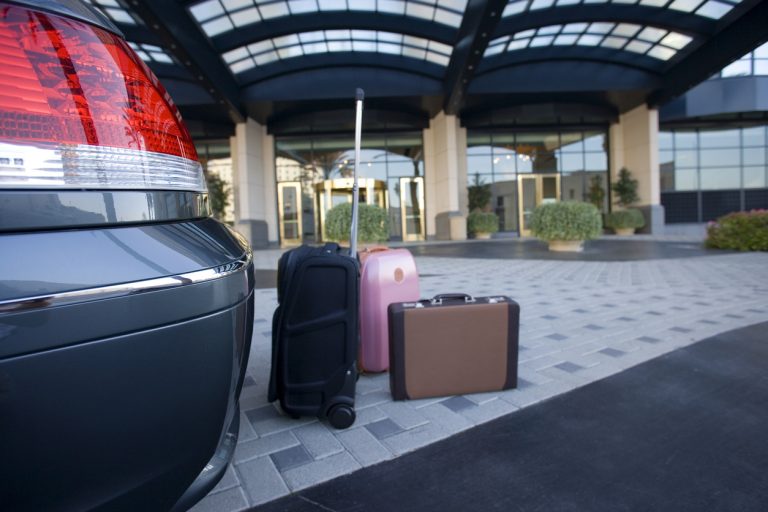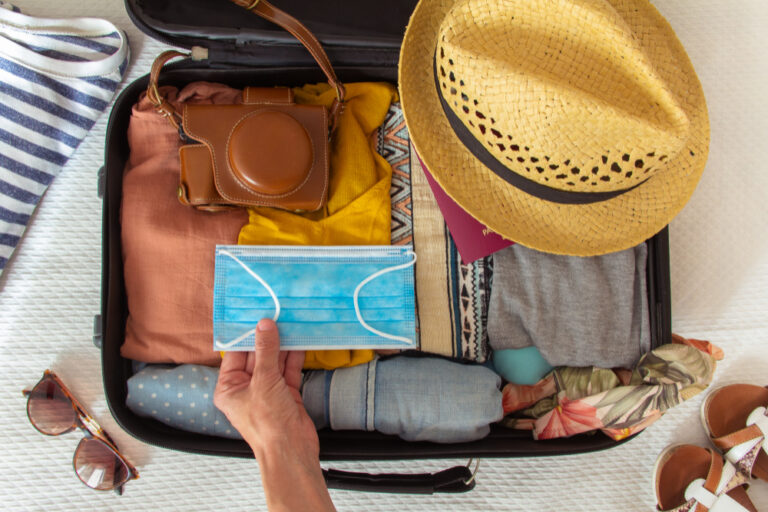Traveling With Your Pet

Family vacations, and even business trips, often include a four-legged friend.

When traveling with a pet, there are guidelines of common courtesy that will make the trip less stressful for your pet and more enjoyable for yourself and fellow passengers. Here are a few etiquette tips when it comes to taking flight with your furry friend:
Pet Travel Fees Vary Among Airlines
Airlines have a limit on how many animals can travel on a flight, so be sure to reserve your pets’ space as soon as possible. Every airline has their own fee scale, generally around $100. Some airlines allow you to pay the fee when you book your flight while others require you to make a pet reservation.
Visit Your Veterinarian Before You Leave
It doesn’t hurt to check with your pet’s doctor to make sure your pet is physically and emotionally able to handle a long flight. Check with the airlines to see if they require a health certificate and get it signed by your veterinarian.
According to the American Veterinary Medical Association, sedating your pet may increase heart and respiratory issues. If your vet feels a particular type of sedation (or any other medicine) is necessary, clearly mark it on the pet carrier and keep the medication close by, in your bag.
Prepare Your Pet to Go Through Security
- Familiarize your pet with the carrier beforehand.
- Visit a pet relief area before going through security.
- Arrive at security with your handheld travel carrier.
- Remove your pet before the screening process begins.
- Put the carrier on the belt for screening.
- The pet owner should be prepared to have their hands swabbed for detection of explosive residue.
- Place your pet back in the carrier after the screening to protect them and as a courtesy to fellow travelers.
Service and Emotional Animals
Support animals can fly in the cabin at no cost. They must be able to fit under the seat or smaller than a 2-year-old child, seated in your lap. Certain airlines may require verification, so make sure you have the proper documents for your support animal prior to flying.
Purchase the Right Size Carrier
Select a pet carrier that can fit under the seat of an airplane, approximately 18X11X11. Look for a soft-sided carrier that can bend slightly, yet is still sturdy enough to keep your pet safe. Check specifics with the airline before you make a major travel purchase.
Pack Thoughtfully
Help your pets stay safe and comfortable throughout the trip by packing a familiar toy, special food, medication, identification tags, and vaccination records. You never know when you will experience an emergency or unscheduled layover. Being prepared will be less traumatic for both you and your pet. In the event you are separated, proper identification will assist in reuniting you with your pet quickly. ALWAYS include your address, phone number and any allergies your pet may have.
Don’t overdress your pet or put a heavy blanket or towel in the pet carrier due to the possibility of suffocation or overheating.
Consider Pet Temperament
Animals are like people; each has a unique personality with quirks and fears. Make sure your pet can travel comfortably by taking their age, health, temperament, and size into consideration. If your dog has extreme anxiety, you will probably not want to subject them to a cargo hold where he/she will be frightened and anxious.
Some Airlines Have Specific Restrictions on Particular Breeds
Certain breeds have more difficulty getting oxygen than others when they fly. Short-nosed dogs, such as Pugs, Boxers, and Pekingese, have a higher fatality rate on a plane than normal nosed dogs. Short-nosed breeds are prone to respiratory problems and have more difficulty breathing due to changes in pressure and air circulation in the cargo hold.
Check the Weather
During extreme temperatures, the cargo hold could get very uncomfortable for your pet, especially when sitting on a tarmac for a long period of time. Be mindful of limiting the time your pet sits in the cargo hold by scheduling your flight to leave early or late in the day when temperatures aren’t as extreme. Generally, airlines won’t allow pets in the cargo space when the forecast exceeds 85 degrees.
Let the Airline Know If You Have a Pet Allergy (For Non-Pet Owners)
If you have a severe allergy to animals, talk to the gate agent or flight attendant when you become aware of certain pets aboard the plane. They will do whatever is possible to move you to another seat. You might want to consider inquiring about the rules of pets on a lap if you are severely allergic.
You may also like Pet Etiquette: Etiquette Tips for Pet Owners. For more of Diane’s etiquette tips read her posts on Inc., subscribe to her articles on HuffPost, “like” The Protocol School of Texas on Facebook, and follow her on Pinterest, Instagram, and Twitter. Buy her new book, Modern Etiquette for a Better Life.







